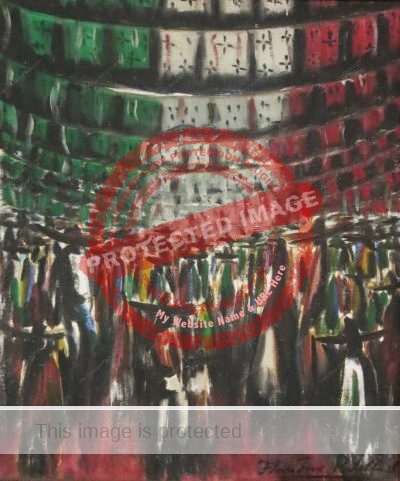Florentino Padilla, who lived from about 1943 to 2010, regularly featured in the pages of the Guadalajara Reporter in the mid-1960s because he was “largely responsible for the bright, charming paintings” that were being produced by youngsters in weekly art classes at the Lake Chapala Society’s “Biblioteca”.
Padilla, described as a personable young man, was then in his early 20s and an accomplished painter in his own right. He had begun painting at the age of 15 and his talent had been recognized by Neill James, the American writer who had resided in Ajijic from the mid-1940s. James helped Padilla get a scholarship to study art in San Miguel de Allende.
James wrote to Stirling Dickinson (the Director of Instituto Allende in San Miguel) in December 1959 to ask him if his offer of a second scholarship was still open. (Javier Zaragoza was already studying at the Instituto). Since showing Dickinson examples of Florentino Padilla’ work, she had arranged for him to stay with artist Francisco García and his family in San Miguel. (The Francisco Garcías were friends of Ajijic resident Esther Merrill.)
In her letter to Dickinson, James explained that Padilla is “studious, eager to learn and gentlemanly. He has done some beautiful murals, 3 meters x 4 meters, mas o menos.” Unless she heard to the contrary, Padilla would be in San Miguel to start classes at the Instituto the first week in January. Padilla studied at the Instituto Allende from 1960 to 1962.
In 1962, Padilla exhibited at the 1st Annual Exhibition of Paintings and Sculptures on Ajijic Beach, organized by Laura Bateman’s Rincón del Arte gallery. Other artists from Ajijic in this juried show with prizes included Antonio Cárdenas, Mary Cardwell, Juan Gutiérrez, Dick Keltner, “Linares” (Ernesto Butterlin), Carlos López Ruíz, Betty Mans, Gail Michels, John Minor, Eugenio Olmedo, Florentino Padilla, Alfredo Santos, Gustavo Sendis, Tink Strother, Digur Weber, Doug Weber, Rhoda Williamson, Sid Williamson, Javier Zaragoza and Paul Zars.
According to a short piece in El Informador, in 1964, when Padilla arranged an exhibit of works by 16 young artists of Ajijic at the Instituto Cultural Mexicano Norteamericano de Jalisco in Guadalajara, Padilla’s teachers in San Miguel had included ‘Gambo’ and ‘Bowman.’
Ajijic resident Hector Hinojosa recalls that Padilla lived in Ajijic until the late 1970s, but then lived in California, where he painted a mural in San Francisco.
In 1965 two visitors from California (Tom and Barbara Lipman) saw Padilla’s paintings in Ajijic and bought three of them on the spot.
Padilla’s niece, Lucia Padilla Gutierrez, is also a gifted artist who benefited from art classes given at the Lake Chapala Society; her son is now following in her footsteps.
We would love to learn more about this artist’s life and work. If you can add to this all-too-brief biography, then please get in touch!
Sources:
- Guadalajara Reporter, 1 October 1964; 19 August 1965.
- El Informador: 2 June 1962, 11; 15 Oct 1964.
- Neill James archive, LCS.
Sombrero Books welcomes comments, corrections or additional material related to any of the writers and artists featured in our series of mini-bios. Please email us or use the comments feature at the bottom of individual posts.
Tony Burton’s books include “Lake Chapala: A Postcard History” (2022), “Foreign Footprints in Ajijic” (2022), “If Walls Could Talk: Chapala’s historic buildings and their former occupants” (2020), (available in translation as “Si Las Paredes Hablaran”), “Mexican Kaleidoscope” (2016), and “Lake Chapala Through the Ages” (2008).
